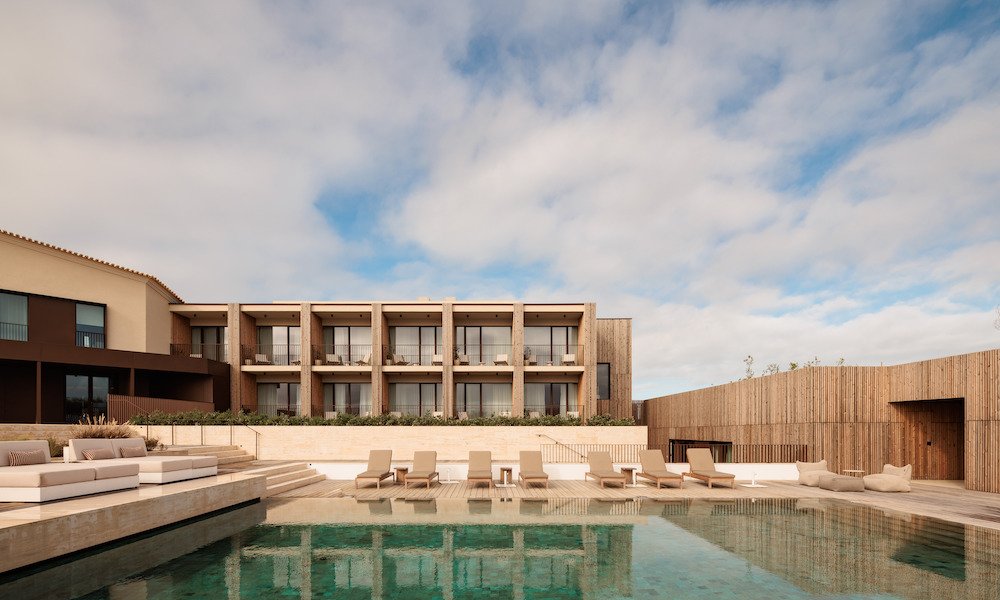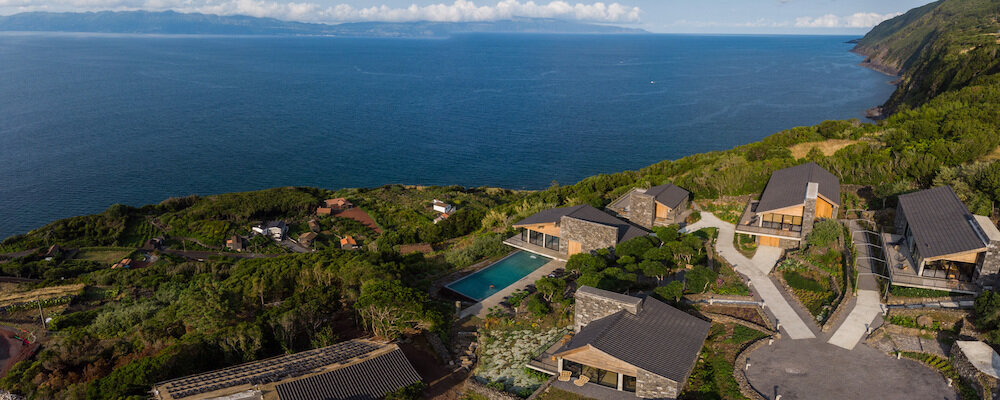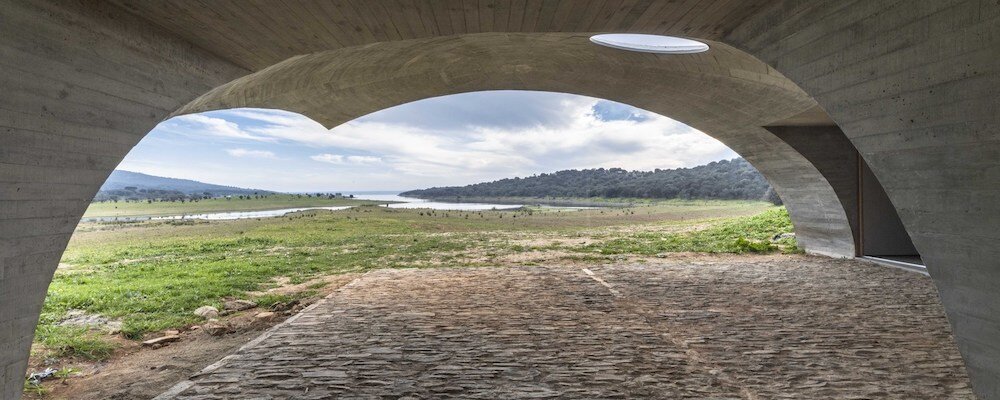Aethos Ericeira Hotel
With boasting views over the Atlantic Ocean, Aethos Ericeira Hotel started as a refurbishment project on a protected site… but the end result looks like a brand new property.
For the Aethos Ericeira boutique hotel project in Ericeira, Portugal, Pedra Silva Arquitectos had to face numerous constraints due to the protected site it is settled in. Despite the many restrictions, the firm's work endeavoured to respect the existing site and building in order to preserve part of its history.
The original building was somewhat lost in several subsequent extensions, with conflicting architectural solutions and a confusing mix between traditional and modern elements. During the development of this project, the architects' starting point was to strip down the buildings to their essence, and to separate the elements they wanted to keep and those they chose to let go.
Deep refurbishment, Key design Iterations
One of those interactions was the change of the main entrance, from the centre of the building to the sea-facing front, where the firm created a double-height area connecting the seascape and greeting users with that arrival experience. The goal was to create something distinguishable, emphasising the character of the space.
Although the existing building had arches, these had no significant expression and were deformed in scale. The architects gave them proportion, texture, depth, and mass to emphasize the presence of the walls and protect the room from direct sunlight during the warmer months.
The windows were stripped down, adding a restored sense of proportion. The result is a space with well-defined architectural boundaries, and simultaneously delicate, that plays with shadows and light.
A second key iteration was the nearly complete demolition of an existing basement on the edge of the pool area, containing an underground multipurpose room. It allowed a wider connection between the pool and the hotel building.
During the design process, various other iterations helped shape the project, such as larger windows, which were a response to the brief requirements and site conditions. The larger windows allow light in and take advantage of the views, rather than opting for the traditional smaller facade openings, especially in the social areas.
The main entrance, at ground level, with a double-height space, includes the lounge area and reception. Adjacent to this space lies the multipurpose and supporting services rooms, and on the opposite side lie the restaurant, bar area, and connection to a second building, as well as back-of-house areas. The main rooms, such as the multipurpose, main entrance, and restaurant, have a direct connection to the exterior, taking advantage of its prime location with wide outdoor areas and large new windows that frame the seascape.
The first level includes mostly bedrooms. The main alterations relate to the creation of the mezzanine area where one can relax and enjoy the views. The basement of this building houses all the service spaces, such as storage, staff areas, and kitchen with dedicated service and delivery accesses.
The extension building, where most of the bedrooms are located, maintains the same layout on the ground and first levels, albeit slightly altered to meet current standards and the level of service intended, as well as new connections to the exterior spaces. At the edge of the extension building, occupying part of the old footprint of the basement, a new small building is created to give room to a spa, which is also connected to the pool area and gym building.
In terms of shape, colour, and materiality, the challenge was to achieve a look and feel that was well integrated with both the existing building and the striking landscape. Colour and texture play into this concept by helping to highlight these two types of interventions: the traditional one, with light-coloured walls paired with darker framed fenestrations, and the modern one, with the texture and warmth of the timber combined with the darker frames. The use of these contrasting but complementing materials played a big role in the design development of the concept and integration of the landscape and the interiors.
Photography: Francisco Nogueira - Architectural Photography
















